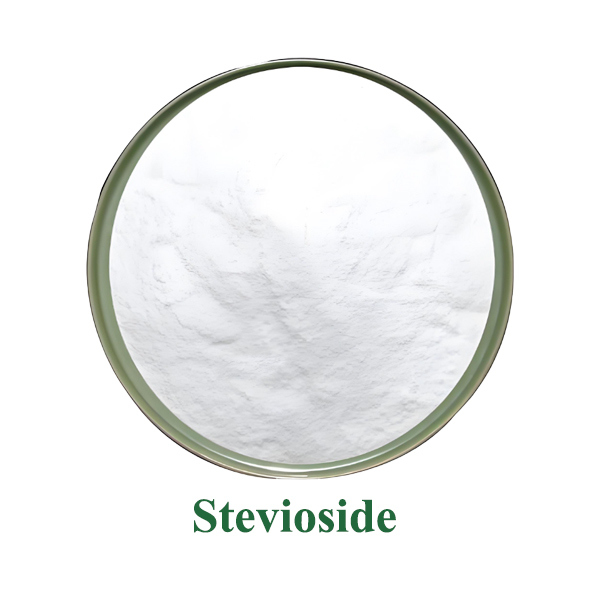
Factory direct sales of food-grade steviol glycoside sweetener, low-calorie sugar substitute, and stevia leaf extract
-
Highlight
food-grade steviol glycoside sweetener
,low-calorie stevia leaf extract
,sugar substitute stevia extract
-
Product NameStevioside
-
CAS57817-89-7
-
Purity99.9%
-
AppearanceLiquid
-
Shelf Life2 Years
-
MOQ5KG
-
PackingFoil Bag,Bottled,Drum,Carton,Container
-
QualityNatural Raw Materials, Safe And Harmless, No Addition
-
EINECS260-975-5
-
Place of OriginShaanxi, China
-
Brand NameBaisfu
-
CertificationStevioside
-
Model Number57817-89-7
-
Minimum Order Quantity5kg
-
Price11.59USD
-
Packaging DetailsFoil bag,Bottled,Drum,Carton,Container
-
Delivery Time10-15 work days
-
Payment TermsT/T,Western Union,D/P,L/C
-
Supply Ability20,000 kilograms a month
Factory direct sales of food-grade steviol glycoside sweetener, low-calorie sugar substitute, and stevia leaf extract
Stevia glycosides are natural sweeteners (a general term for a class of glycoside compounds) extracted from the dried leaves of Stevia rebaudiana, a plant in the genus Stevia of the Asteraceae family, through processes such as water extraction and purification. Characterized by high sweetness and low calories, they also possess advantages such as natural safety and high stability. Widely used in food, beverages, and daily chemical industries, they are a classic natural sweetener that replaces sucrose, aligning with the trend of healthy eating.
Chemical Composition: Primarily composed of more than eight glycoside compounds, including stevioside, rebaudioside A (RA), and rebaudioside C, with stevioside and RA being the main active ingredients (accounting for approximately 70%-90%). All chemical structures contain a glucose stalk and a tetracyclic diterpenoid skeleton, with a purity typically ≥90% (food grade).
Physical Properties: At room temperature, it is a white or pale yellow powder, odorless or with a slightly characteristic odor, and its sweetness is approximately 150-300 times that of sucrose (RA is even sweeter and has a superior taste); it is readily soluble in solvents such as water and ethanol, and its aqueous solution is neutral; it has good heat resistance, maintaining its sweetness and resisting decomposition in processing environments below 100℃.
Chemical properties: It is highly stable and can exist stably in the pH range of 3-10. It is resistant to acids and alkalis, baking and sterilization, and does not easily react with other food ingredients. It has no reducing properties, will not cause Maillard reaction, and does not affect the color stability of the product.
| Product Name | Stevioside |
| CAS | 57817-89-7 |
| EINECS | 260-975-5 |
| Type | Food Flavors |
| Brand Name | BAISIFU |
| Appearance | Liquid |
| Shelf Life | 2 years |
| MOQ | 5KG |
| Origan | Shaanxi,China |
| Purity | 99% |
| Packing | Foil bag,Bottled,Drum,Carton,Container |
| Storage | Sealed in dry,Room Temperature |
-
Food Industry
Baked Goods: Used in cakes, cookies, bread, pastries, etc., replacing some or all of the sucrose, reducing product calories while maintaining sweetness and taste, without affecting the color and texture after baking.
Confectionery and Dairy Products: Used in hard candies, soft candies, chocolates, yogurt, ice cream, dairy beverages, etc., imparting a pure sweetness, reducing sucrose usage, suitable for low-calorie and sugar-free food positioning; good compatibility with dairy products, without affecting the milky aroma.
Snack Foods: Used in candied fruits, dried fruits, potato chips, nuts, etc., replacing sucrose or high-fructose corn syrup, improving product sweetness while reducing calorie intake, meeting the demand for healthy snacks.
-
Beverage Industry
Sugar-Free Beverages: Widely used in carbonated beverages, fruit juice beverages, tea beverages, coffee beverages, plant protein beverages, etc., as a core sweetener to replace sucrose, creating "0 sugar, 0 calories" products, with a taste close to sucrose and no obvious off-flavor.
Functional beverages: These are used in sports drinks, meal replacement shakes, probiotic drinks, and drinks specifically for diabetics. They provide sweetness without adding calories, catering to the needs of specific groups.
-
Highly health-oriented and suitable for low-calorie needs: It contains virtually no calories (the human body cannot metabolize and absorb its glycosides), significantly reducing product calories as a sucrose substitute, making it suitable for diabetics, obese individuals, and consumers seeking a low-calorie diet; it does not affect blood sugar fluctuations, does not cause tooth decay, and aligns with the consumer trend of "sugar control and health."
-
High and controllable sweetness, excellent cost-effectiveness: Its sweetness is 150-300 times that of sucrose, requiring only a small amount to achieve the desired sweetness effect, with a unit cost far lower than sucrose; it can be compounded with sweeteners such as sucrose, fructose, and maltitol to improve taste (masking its own slight bitterness) while reducing the overall amount of sweetener used and controlling costs.
-
Natural and safe, with strong compliance: Derived from stevia plant extract, it is a natural food additive, complying with the usage standards of most countries and regions worldwide, including GB 2760, FDA, and EFSA; it is non-toxic, non-allergenic, and has good biocompatibility; long-term use within the prescribed dosage is safe for the human body with no side effects.
- It has a wide range of stability and adaptability: it is resistant to temperature, acid and alkali and processing, and is suitable for various processes such as food baking, beverage sterilization and daily chemical production; it is easily soluble in water and common solvents, and can be well compatible with various systems such as food, beverage and pharmaceutical, without affecting the original texture, taste and shelf life of the product.





Overall Rating
Rating Snapshot
The following is the distribution of all ratingsAll Reviews